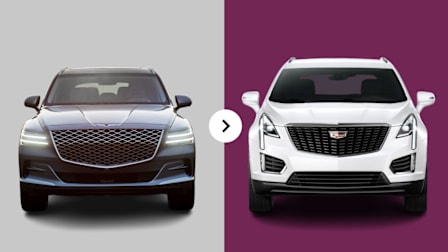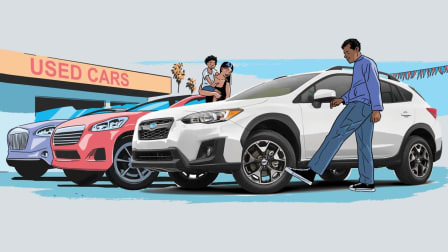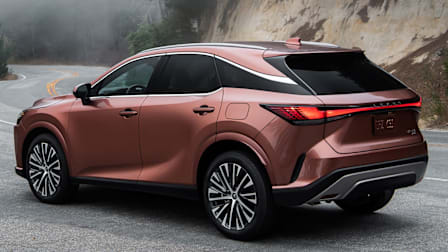How It Works: FWD vs. RWD vs. AWD vs. 4WD
A guide to the differences and which system is best for you
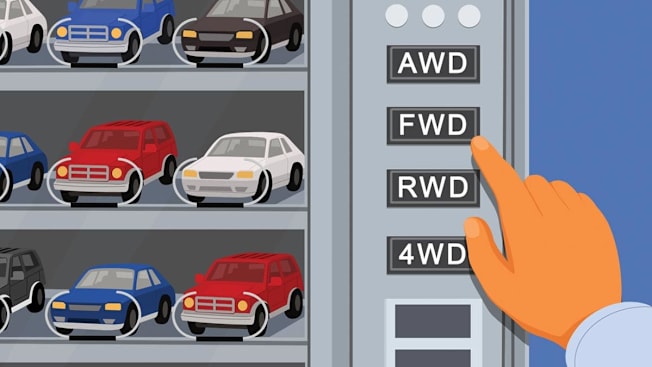
Foul weather, deep snow, and muddy roads can all have drivers craving more traction. There are four drivetrain configurations to choose from: front-wheel, rear-wheel, all-wheel, and four-wheel drive. By learning how each of these systems works, you can better choose the right one for your challenges.
All passenger vehicles sold in the U.S. starting with the 2012 model year come equipped with electronic stability control, which, along with traction control, significantly improves road-holding capabilities, regardless of the drive wheels. Even so, we have found that there are noteworthy differences in the driving and traction characteristics among drive types.
- The Four Drive Systems: Front-Wheel Drive Rear-Wheel Drive All-Wheel Drive Four-Wheel Drive What Do You Need? Is AWD Safer? Not Necessarily.
Front-Wheel Drive
The vast majority of passenger vehicles on the road today use front-wheel drive (FWD), where the engine’s power is routed to the front wheels. FWD designs are cheaper to manufacture and more space-efficient than rear-drive systems because the engine, transmission, and axles are located close together in the engine compartment.
From an interior packaging standpoint, FWD precludes the need for a space-robbing transmission and driveshaft hump running down the middle of the cabin floor. Plus, FWD has the added advantage of better traction while climbing hills and driving on slippery surfaces because the engine’s weight is poised over the front wheels.
All-wheel drive is often added to FWD-based vehicles, and power is sent to the rear wheels only as needed. FWD can also compromise a vehicle’s sporty performance, but it strikes a widely desirable balance for everyday driving and usability.
Rear-Wheel Drive
Rear-wheel drive (RWD) is commonly found on full-sized pickups and truck-based SUVs, as well as sports cars and high-performance and luxury sedans. For trucks, RWD allows the use of bulky, heavy-duty axles and suspension components that are designed to handle large loads.
On a performance car, RWD improves handling by helping to balance the car’s weight more evenly front to rear—the heavy engine up front is offset by the weight of the rear differential. Because the front wheels don’t have to do double duty—both driving and steering—designers can optimize the front and rear suspensions for their respective roles. “RWD can offer a more dynamic driving experience compared to the more typical FWD options,” says Alex Knizek, Consumer Reports’ associate director of auto test development.
However, RWD provides less traction on slippery roads. These days, most high-end cars offer all-wheel drive either as standard equipment or as an option. All truck-based (body-on-frame) pickups and SUVs are offered with optional four-wheel drive.
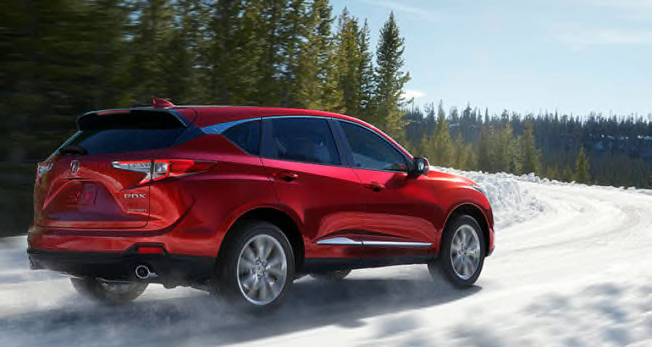
Photo: Acura Photo: Acura
All-Wheel Drive
As the name implies, all-wheel drive (AWD) can feed power to each corner. Depending on the design of the system, AWD can provide maximum forward traction during acceleration. “AWD as found on many small crossover SUVs and some cars is great for those who need increased traction for mild slippery conditions such as snow, ice, or dirt trails,” Knizek says. Most AWD systems deliver power primarily to one set of wheels, front or rear. When slippage is detected at one axle, power is diverted to the other axle, in hopes of finding more traction there.
Sophisticated clutch systems and, more recently, the use of electric motors allow for precise control over the power sent to each wheel. High-performance vehicles with AWD often send power to each corner at all times. But they can alter the balance among the wheels depending on conditions or drive mode to change the car’s performance characteristics.
Not all AWD systems are equal. Subaru’s mechanical AWD system always directs at least some of the engine’s power to all four wheels, and it can direct a larger amount aft if needed. Many other systems fitted to FWD vehicles operate with 100 percent of the power normally going to the front wheels; the rear wheels then receive power only when the front wheels start slipping, or proactively based on the vehicle conditions or drive mode selection. Some performance cars that have an AWD system added to a typically RWD drivetrain send more power to the rear wheels by default for a more engaging driving experience, and only send more power to the front when needed for better traction. This transfer of power is traditionally achieved with a mechanical driveshaft running the length of the car, but electric vehicles and some hybrids utilize individual motors at each axle with no physical connection between them.
AWD systems are especially helpful in rapidly changing conditions or when driving on a road with intermittent snow and ice. It is commonly used for car-based SUVs, as well as certain cars and minivans.
Four-Wheel Drive
Although four-wheel drive (4WD or, alternately, 4x4) and AWD are designations that are often used interchangeably in advertising and sales literature, there is a difference. Generally, 4WD is optimized for severe off-road driving situations such as climbing over boulders, fording deep water, and tackling steep hills with loose, low-traction surfaces. Most 4WD systems use a heavy-duty transfer case with a high and a low gear range. “Low-range gearing provides more torque to the wheels and finer throttle control in serious off-road conditions,” Knizek says. Some have differentials (which allow left and right wheels and front and rear axles to turn at different speeds) that can be locked for maximum traction.
There are three types of modern 4WD systems:
• Full-time, which means power is always sent to all wheels.
• Automatic, where the vehicle automatically switches between two- and four-wheel-drive modes as needed.
• Part-time, which requires the driver to manually shift between two- and four-wheel drive. Vehicles with a part-time system shouldn’t be driven in 4WD mode on dry pavement because doing so could risk damage to the vehicle’s drivetrain.
Aside from serious off-road enthusiasts, most drivers never come close to needing the capability that 4WD systems provide over and above AWD systems.
What Do You Need?
If you’re trying to decide which drivetrain layout is best for you, Knizek says, “consider the climate where you live and the roads you typically drive.” For rain and very light snow, 2WD will probably work fine, and for most vehicles, FWD is the preferred setup and is likely to cost less than an equivalent AWD model. For performance cars, RWD is often preferred, but AWD, if available, can increase traction. AWD is fine for most normal snow conditions or for light-duty, off-pavement excursions on dirt roads or slippery surfaces. If you’ll be driving in severe snow or true off-road situations, or if you’re interested in pursuing off-roading as a hobby, you should opt for a vehicle with 4WD and lots of ground clearance. Truck shoppers who don’t need the extra 4WD capabilities—say, if you only use it to tow an RV in fair weather—can save thousands of dollars by sticking to 2WD.
Keep in mind that both AWD and 4WD systems add considerable weight and complexity to a vehicle. Their extra cost doesn’t end at purchase—you’ll often spend more on fuel over the lifetime of the vehicle than you would with a similar 2WD model.
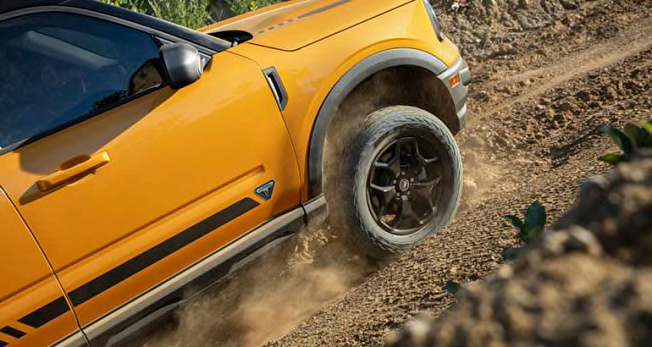
Photo: Ford Photo: Ford
Is AWD Safer? Not Necessarily.
One of the reasons many people buy a traditional SUV is for the extra security and traction of four-wheel drive. Many drivers don’t realize the limitations of AWD and 4WD, however. Although having power delivered to all four wheels increases straight-line traction, neither system improves braking, and most systems have little to no effect on cornering. And even then, only when accelerating.
Drivers can be fooled into traveling too quickly in slippery conditions with an AWD or 4WD vehicle, only to discover they are going far too fast when trying to stop. Because the added traction of 4WD can allow a vehicle to accelerate more quickly in slippery conditions, drivers need to be more vigilant, not less. Slippery conditions demand extra caution, no matter what you drive.
In many cases, having good tires is more important than the drive wheels. Winter/snow tires, for instance, actually do help you turn and stop on a snowy road—things that AWD doesn’t help with.
Best Car Products of the Year
Car Batteries • Car Tires • SUV and Truck Tires • Winter/Snow Tires • Infant Car Seats
@consumerreports Our testing identifies standout tires with the best cold-weather grip, including all-season and dedicated winter/snow tires. See the best winter/snow tires through the link in our bio. #cartiktok #cartok #carcommunity #allwheeldrive
♬ original sound - Consumer Reports

















